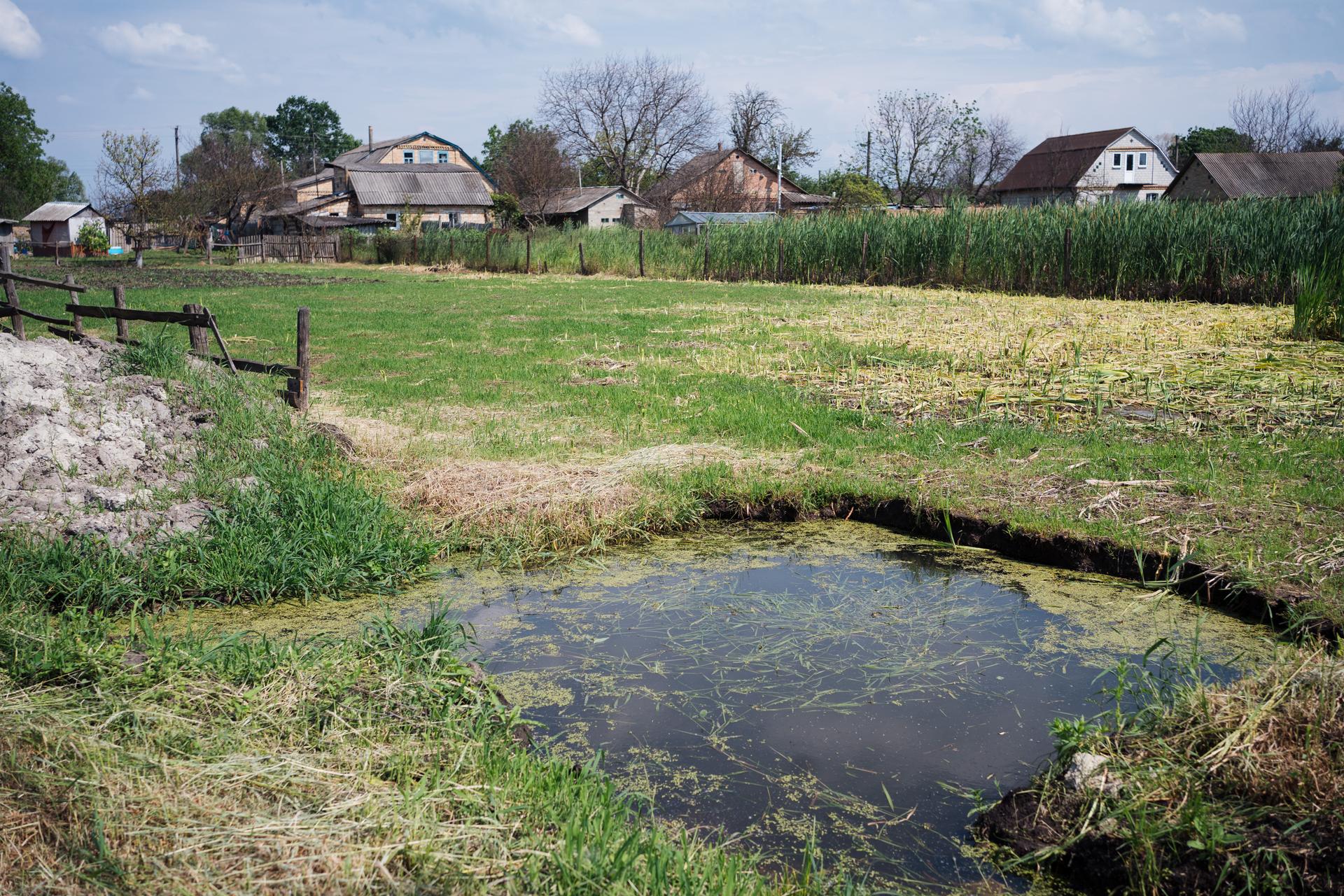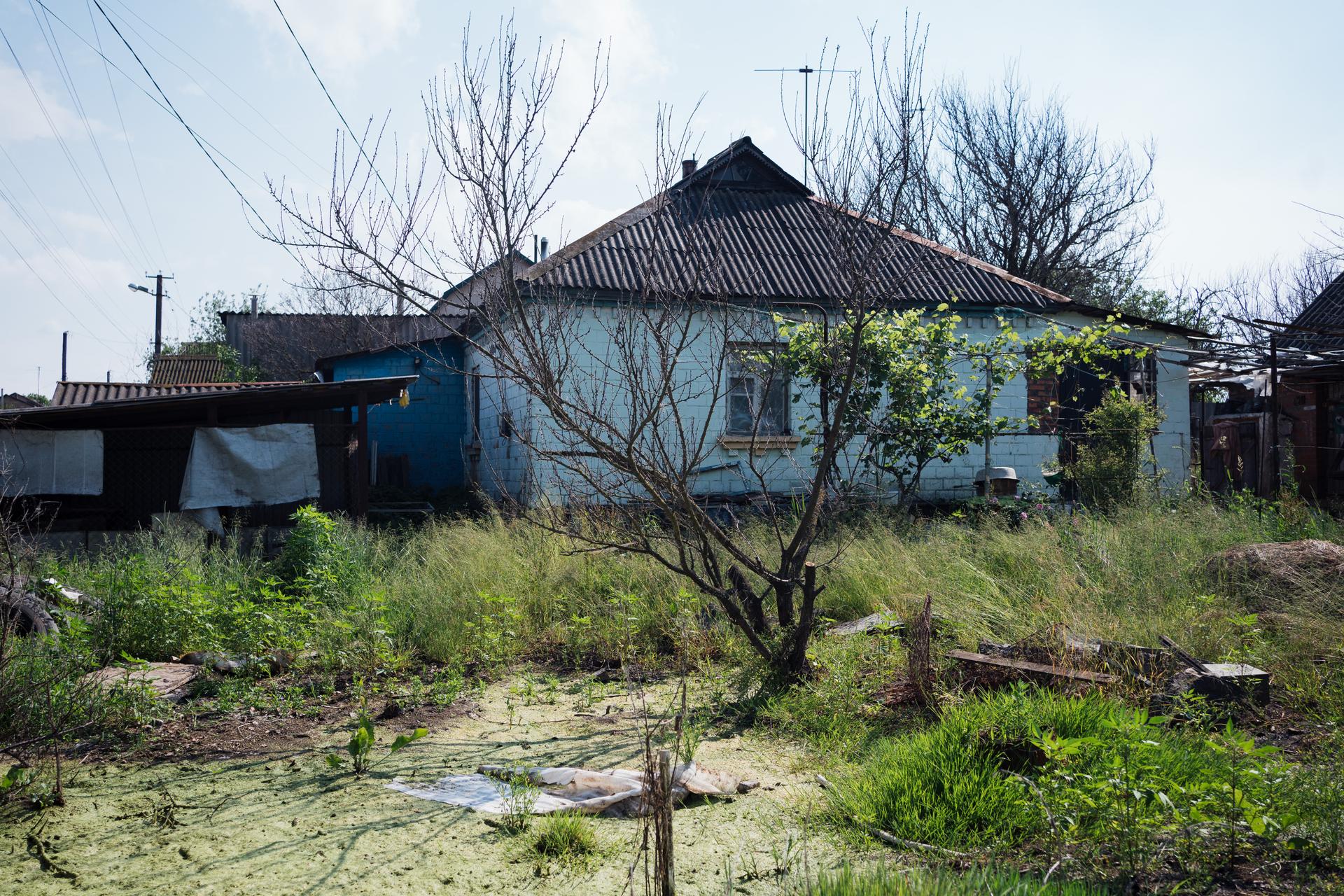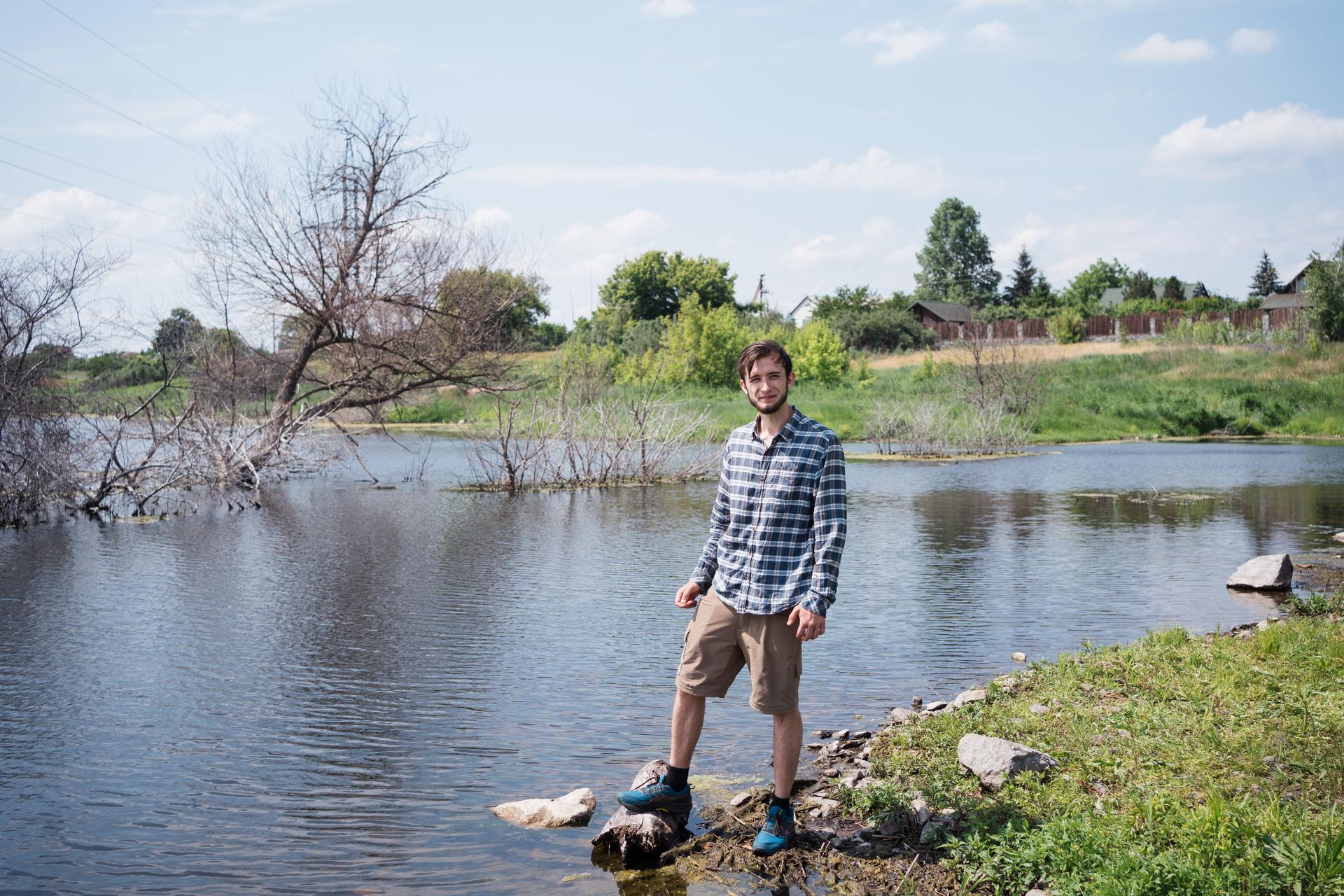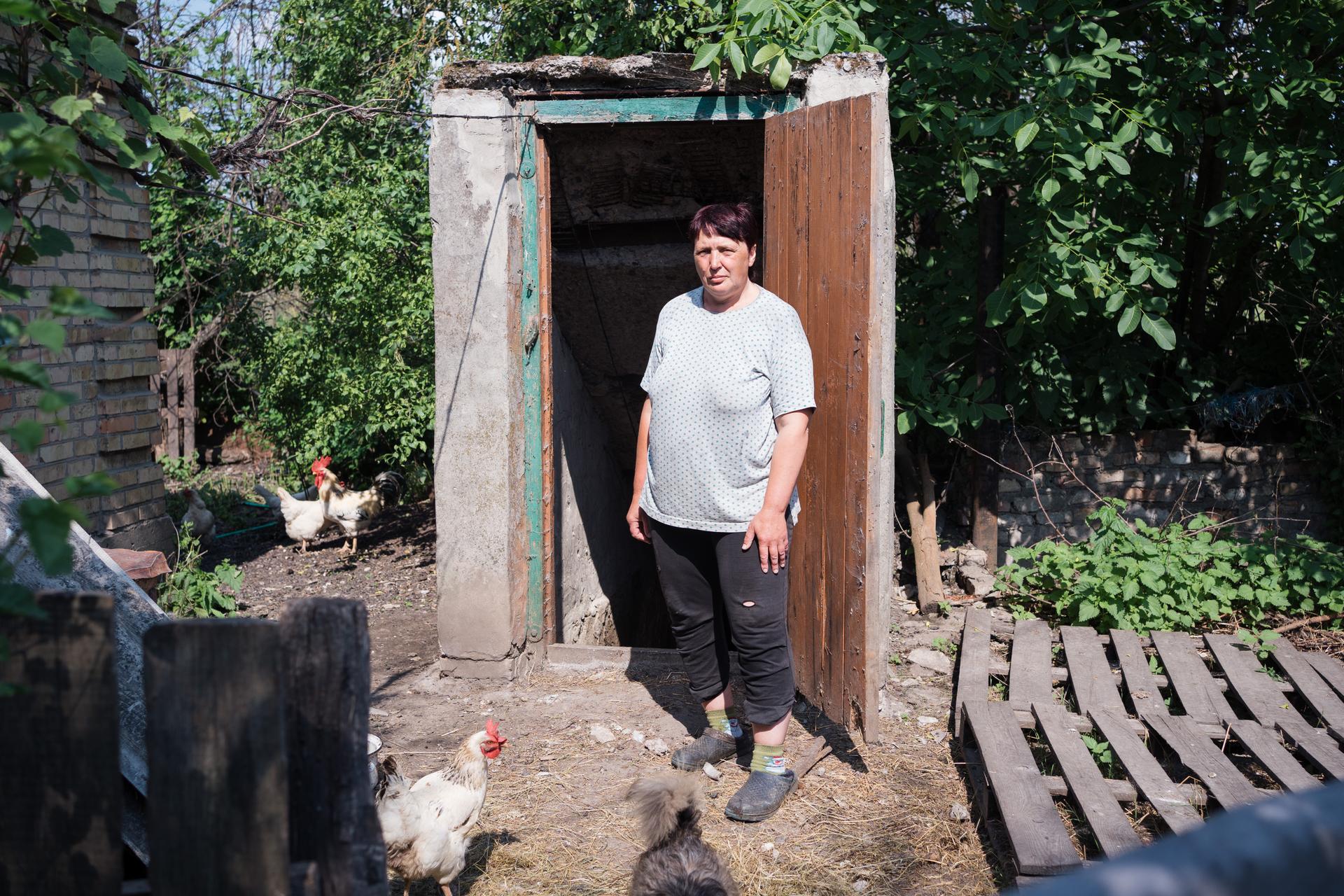Tetyana Samoylenko tried to save all the vegetables in her root cellar before the water started filling it last winter, but she couldn’t get them all.
Now, shriveled black potatoes float in about 3 feet of water that flowed to the village of Demydiv in the early days of the full-scale Russian invasion.
Samoylenko lives not far from a dam separating the Irpin River from the Kyiv Reservoir, which Ukrainian forces blew a hole through in February of 2022.

Thousands of acres of land about 25 miles north of central Kyiv were flooded. That water has been credited with preventing Russian troops from advancing toward Kyiv in their early push for the capital. The new wetland has become a largely welcome addition to the natural landscape, though the water remains an inconvenience for Samoylenko and others in her village whose homes were flooded.
The water reached Samoylenko’s floorboards at its highest. Her water pump was destroyed and her well was contaminated, so she can’t drink the water anymore.
“It’s too dirty,” she said. “All of the sewage system got flooded, too, and all the toilets. Everything was floating here.”

Now, her sister and brother-in-law, who live in a part of the village that still has clean drinking water, drop off several, 5-liter bottles of drinking water each day.
It’s been like this for well over a year, but Samoylenko is still glad the dam was damaged.
“I’m not mad,” she said. “Had this not happened, Russians would have reached Kyiv.”
That’s largely the public sentiment here, where some people have started calling the Irpin a “Hero River.” The dam hasn’t been repaired; the 7,000 acres remain flooded.
On a warm June afternoon, people sat relaxing on the dam, biking across its span, or hiking along the water line. Swans floated by on the water.
Volodymyr Nechyporenko, who lives in a nearby town, fished in the shallow water.
“It was the right decision to [burst the dam],” he said through an interpreter, “because if they hadn’t blown it, the Russians would be in Kyiv.”
He fishes here about once a week, sometimes frying up the bigger catch to eat, and he wants the wetlands to stay as they are.
Roman Lysenko, a biologist with the Ukrainian Nature Conservation Group, said conservationists in Ukraine mostly say the same thing.

“It’s quite like what it used to look like in the spring, maybe a hundred years ago,” he said.
Lysenko said the dam was built in the 1960s, and that dried out a natural floodplain. Now, the Irpin River is running closer to its natural course again.
“Now, almost everything that remains under the water is natural floodplains,” he said.
On a visit to the new wetland in June, Lysenko surveyed the pioneer species establishing themselves in the new ecosystem, noting plant species growing near the waterline and a gray heron that flew low over the water.

“It’s a good sign. I think we will see that biodiversity will bloom here,” he said.
The flooded wetland is a nursery for fish and a good habitat for plants that need fluctuating amounts of water, he said, but for birds, “it’s like heaven.”
This is not how conservationists would have restored this ecosystem had they planned it. Fertilizer and sewage was likely swept into the water when the dam was damaged, Lyzenko said, and homes were flooded.
But now, the area is closer to its natural state than it has been in decades, Lysenko said: “Maybe it’s optimal. It’s optimal for nature, and it’s still optimal for the defense of our country.”
The Ukrainian military has told residents this new wetland will stay here until at least the end of the war.
